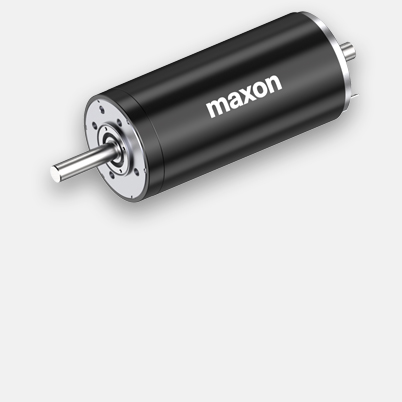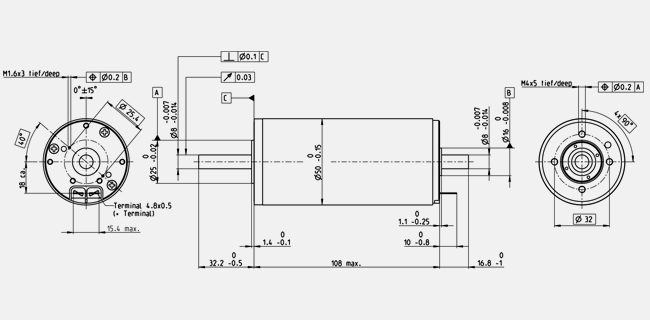
| Price scales | Quantity | Price per unit |
|---|---|---|
| Prices excluding VAT and shipping costs | 1-4 | $751.00 |
| 5-19 | $646.25 | |
| 20-49 | $518.75 | |
| from 50 | On request |
NRND (Not Recommended for New Designs): These products continue to be available, but are not recommended for new projects. Our sales team will be happy to suggest alternatives.
Specifications
Technical illustrations
- Dimension drawing
Information: Drawings are not to scale.
| Values at nominal voltage | |
| Nominal voltage | 70 V |
| No load speed | 2760 rpm |
| No load current | 27.4 mA |
| Nominal speed | 2470 rpm |
| Nominal torque (max. continuous torque) | 452 mNm |
| Nominal current (max. continuous current) | 1.89 A |
| Stall torque | 4340 mNm |
| Stall current | 17.9 A |
| Max. efficiency | 92 % |
| Characteristics | |
| Terminal resistance | 3.9 Ω |
| Terminal inductance | 2.83 mH |
| Torque constant | 242 mNm/A |
| Speed constant | 39.5 rpm/V |
| Speed / torque gradient | 0.638 rpm/mNm |
| Mechanical time constant | 3.74 ms |
| Rotor inertia | 560 gcm² |
| Thermal data | |
| Thermal resistance housing-ambient | 3.81 K/W |
| Thermal resistance winding-housing | 1.24 K/W |
| Thermal time constant winding | 71.7 s |
| Thermal time constant motor | 1370 s |
| Ambient temperature | -30...+100 °C |
| Max. winding temperature | +125 °C |
| Mechanical data | |
| Bearing type | ball bearings |
| Max. speed | 9500 rpm |
| Axial play | 0 mm, at radial load < 11.5 N |
| 0.1 mm, at radial load > 11.5 N | |
| Radial play | 0.03 mm |
| Max. axial load (dynamic) | 30 N |
| Max. force for press fits (static) | 150 N |
| (static, shaft supported) | 6000 N |
| Max. radial load | 110 N, 15 mm from flange |
| Other specifications | |
| Number of pole pairs | 1 |
| Number of commutator segments | 15 |
| Number of autoclave cycles | 0 |
| Product | |
| Weight | 1100 g |


